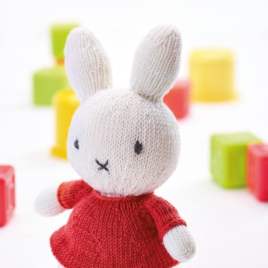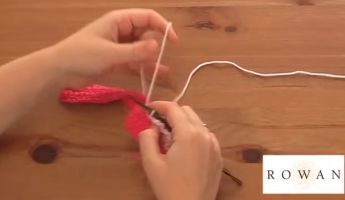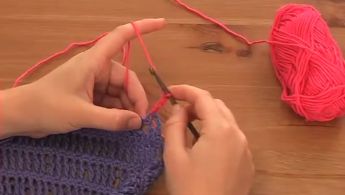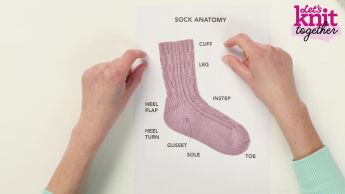How to: work invisible circular cast on
video by
Let's Knit Together
- Overview
- Practical Guides
This fantastic cast on can be used to knit a flat circle, and is also invaluable for top-down hats or tea cosies, as your stitches are already joined in the round without the need for seaming.
Only a small number of stitches are cast on and the tail end is used as a drawstring, once the stitches are spread onto double pointed needles and a few rounds of the pattern have been worked and the stitch count has increased. (This technique is similar in effect to starting with a magic loop in crochet and is not to be confused with magic loop knitting, which is for those who find DPNs tricky and want to knit small circumferences on a circular needle.)
Stitches are cast on in an alternating method, but first a loop must be created. On a flat surface, make a loop with the tail of the yarn on top and going to right. Hold a double pointed needle in your right hand and pick up the loop so the crossed strands sit on top of the needle, and hold them here with a finger. The tail end will be in front of the needle and the working yarn behind.
Tension the working yarn in your left hand and insert your index finger under the strand. Grip base of loop with the left thumb and middle finger, and adjust the loop size to 3-4cm. Hold tail end out of way.
To cast on the first stitch, insert the needle through the loop to catch the working yarn at the back and pull up a new loop. At this point you may need to adjust your grip on crossed strands to avoid a twist. One stitch has been cast on through the loop.
To cast on the second stitch, simply dip the needle behind the working strand to wrap yarn over the needle from the back, and hold this stitch on the needle with a finger. One stitch has been cast on with a simple wrap.
Continue to alternate this method of casting on stitches, through the loop and with a wrap, as required by your pattern and ending with a stitch cast on through the loop, as this sits on the needle more securely. The loop will end up sitting below the cast-on stitches.
Distribute the stitches over two more DPNs, add a stitch marker for the start of the round. Follow the pattern, working the first round work fairly tightly as there are two types on cast on stitches.
After a few rounds, pull the yarn tail to close the hole formed by the starting loop and be sure to weave in the end later as usual. Continue with your pattern, adding more DPNs or changing to circular needles to accommodate the growing circumference.










































